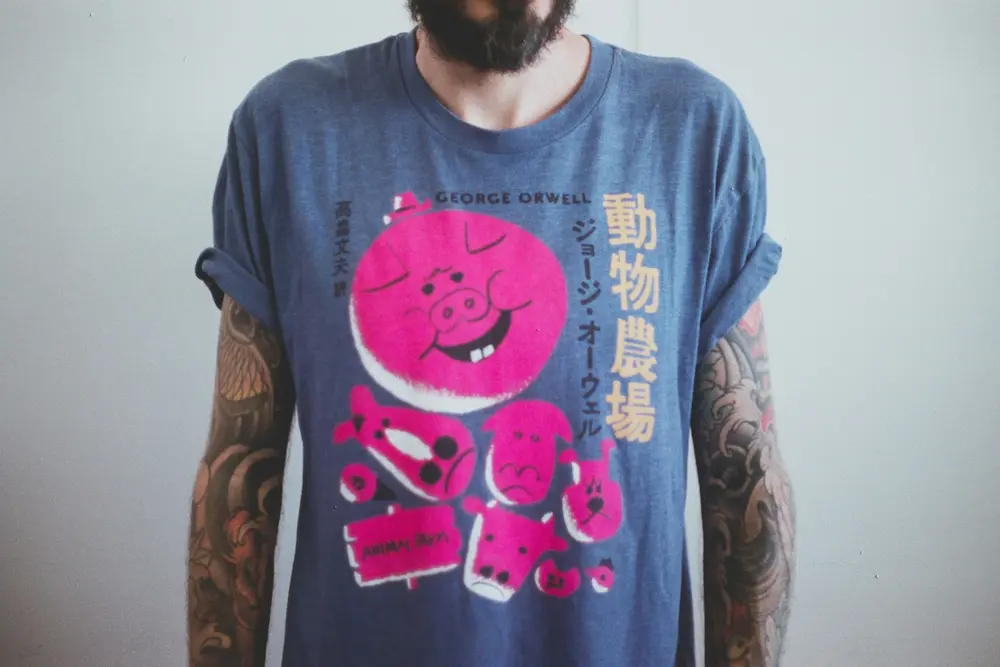Launching a t-shirt business can be an exciting, not to mention potentially lucrative endeavor, but like everything in life, it’s not without its challenges. Staring at this kind of project requires more than just a great design idea and a passion for fashion. It demands a solid understanding of your target market, a well-crafted business plan to act as your guide, and the ability to source materials, equipment, and personnel successfully. This guide will walk you through the entire process, from conducting market research and identifying your niche to selecting the right printing techniques and equipment.
Research The Current Market Trends
Before heading headfirst into any entrepreneurial activity, it is paramount to understand the current trends in the market and what current consumers have a preference for. The t-shirt industry constantly evolves, and staying ahead of others can give you a significant competitive advantage. Started by analyzing the latest fashion trends and popular designs. What styles, colors, and graphics are resonating with your target audience? Look for inspiration from various sources, including social media, fashion blogs, and industry publications. Identify emerging trends and determine how you can incorporate them into your t-shirt designs. You may find out that a particular type of printing is more popular than others. For example, it could be that an option like DTF transfers will be the most in-demand and enable you to create fantastic designs while lowering costs. You must also research your competition. Analyze their product offerings, pricing strategies, and marketing approaches. Also, consider attending trade shows or industry events to gain insights into the latest printing techniques, materials, and technologies. Another aspect to examine closely is the company’s demographics to which you aim to sell. Understanding who they are and what they buy will massively boost your marketing efforts and increase your bottom line.
Identify A Specific Niche Market
While this industry offers a vast array of opportunities, focusing on a specific niche market can be a strategic move for your business. By catering to a well-defined target audience, you can differentiate your offerings and establish yourself as an expert in a specific area of design. Start by exploring various markets within the t-shirt industry. Once you’ve identified your niche market, immerse yourself in their community. Attend relevant events, join online forums, and engage with influencers and thought leaders. Specializing in specific styling and niching down will help you optimize your operations from sourcing to marketing, and it means you’ll be able to provide the precise t-shirts that your audience wants.

Create A Detailed Business Plan
A well-crafted business plan is the backbone of any entrepreneurial venture, regardless of which industry or sector you choose to operate in. This document will serve as a roadmap, guiding you through the various stages of launching and growing your fledgling company. It must cover the following key elements:
- Executive Summary: A concise overview of your business, including your mission, goals, and unique value proposition.
- Market Analysis: An in-depth examination of the t-shirt printing industry, your target market, and your competition.
- Product and Service Offerings: Specify in great detail the goods and services you intend to sell, including your price policies, special features, and personalization choices.
- Marketing and Sales Strategy: A comprehensive plan outlining how you will promote and sell your products, including your branding, advertising, and distribution channels.
- Operations Plan: An outline of your production processes, equipment needs, staffing requirements, and supply chain management.
- Financial Projections: Realistic forecasts for your revenue, expenses, and profitability over the next three to five years.
- Management Team: An introduction to the key members of your team, highlighting their relevant experience and expertise.
Keep in mind that writing the business plan is an ongoing process. As your company develops and changes, you should revisit and revise this document regularly. By writing a thorough and thoroughly researched business plan, you may improve your odds of getting finance and surviving the trials of beginning and maintaining a successful firm.
Secure Necessary Permits And Licenses
Ensuring compliance and avoiding possible hindrances requires navigating the legal landscape. You risk heavy penalties, legal issues, and maybe the demise of your firm if you don’t have the required licenses and permissions. Find out what rules and restrictions are in place at the federal, state, and municipal levels before you begin printing and selling t-shirts. Obtaining the necessary permissions and licenses can be complicated and location-dependent. A general business license or tax registration certificate, for example, is required by the majority of firms. In addition, municipal authorities usually require zoning permits and occupancy licenses for businesses that have a physical storefront or engage in commercial printing. A valid Employer Identification Number (EIN) from the IRS will also be required by law if you want to employ people and adhere to all applicable labor regulations. Additionally, you might be required to apply for sales tax licenses in the appropriate jurisdictions if you intend to sell things online or across state boundaries.

Choose High-Quality Printing Equipment
The quality of your printed t-shirts is directly influenced by the equipment you choose for your business. Investing in high-quality printing equipment ensures superior results and enhances efficiency and productivity. When selecting printing equipment, consider factors such as print quality, speed, versatility, and cost-effectiveness. Popular options include screen printing machines, direct-to-garment (DTG) printers, and heat transfer presses, each with its own advantages and limitations. Regardless of your printing method, ensure that the equipment is reliable, user-friendly, and compatible with your business needs. Consider seeking advice from industry experts or attending trade shows to test and compare different equipment options before investing significantly.
Develop A Strong Brand Identity
Start by defining your brand’s mission, vision, and core values. These elements will guide the development of your brand’s visual identity, including your logo, color scheme, and overall aesthetic. Consistency across all touchpoints, from your website to your storefront, is key to building brand recognition. A powerful brand identity does double duty:
- It draws in customers
- Makes them believe in your products and services
You can lay the groundwork for sustainable success in the t-shirt printing market by devoting resources to creating a consistent and genuine brand.
At the end of the day, starting a successful t-shirt business boils down to understanding your target market, investing in quality equipment, and delivering exceptional customer service. Embrace the journey, and let your passion for design and entrepreneurship guide you every step of the way.








